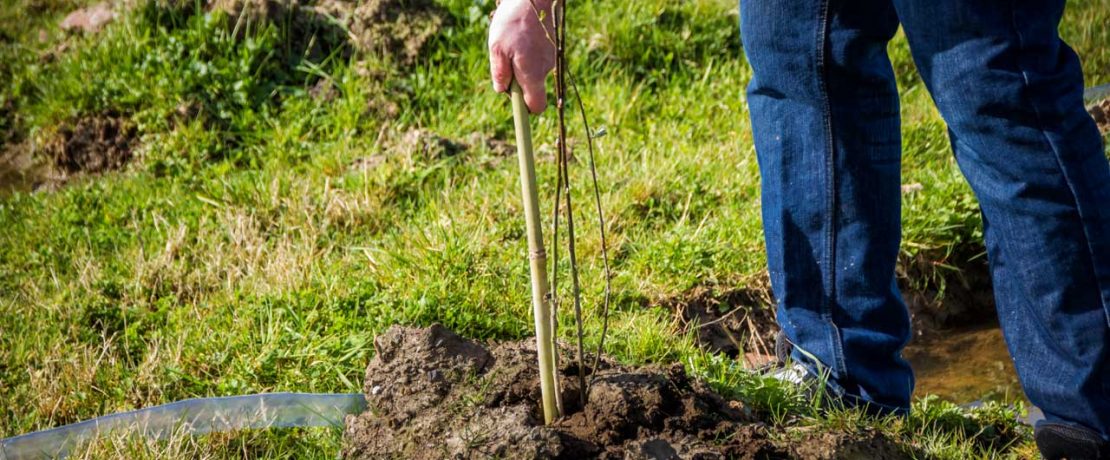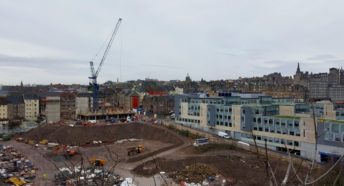Planning for better: our vision of climate and nature-friendly planning systems
Dr Richard Simmons, chair of policy committee and trustee at CPRE, the countryside charity, comments on the opportunities missed in the current Planning white paper.
This government has told us that they’re serious about tackling the clear and present danger of the climate emergency. As the world battled the coronavirus in June, the Prime Minister rightly reminded us on his Twitter feed that:
‘… we cannot lose sight of the need to protect our people and our planet from the devastating threat of climate change and biodiversity loss if nothing is done’.
At CPRE, we also take the climate crisis and the ongoing assault on nature incredibly seriously, and, as Boris Johnson urges, we’re determined not to lose sight of them.
But if the Prime Minister and his government are as serious about tackling these emergencies as they say, then they’re missing a trick with their new proposals for the planning system.
An un-green white paper
In August of this year, we got sight of the government’s plans for the future of the planning system – the rules by which it’s decided what new buildings are permitted.
Aside from our concerns about the risks to local voices being heard and the threats to nature, we were also looking to see vital commitments being made around how new housing can mitigate against climate change and protect threatened nature.
After all, it’s starkly clear now that what we build, where we build it and how we move around are major drivers of carbon emissions that fuel climate breakdown. We know from painful experience that the destruction of nature is a frequent casualty of reckless development. That’s why a robust, locally-led planning system is crucial to our response to the climate emergency.
So did the proposals for a changed planning system deliver on this?
In a word: no.
More questions than answers
With so much at stake, we need clarity of thought and speed of action. But these proposals raise more questions than answers.
What’s the point in this government investing in new technology to lock up carbon, limiting emissions and therefore climate damage, when your very own planning system will produce dislocated, car-dependent, land-hungry developments – which will in turn only push up carbon emissions?
Where’s the logic in launching schemes to plant millions more trees with one hand while the other hand gives developers far greater freedoms to build on countryside valued by local communities?
The proposals lack ambition. They’re ambiguous about environmental measures and have many objectives, with no sense of priority.
A toolbox – with the right kit
When done well, far from adding to climate damage, the planning system can be a toolbox with the potential to actually crank up action on the climate and biodiversity crises.
But the proposals for new planning rules fail to reimagine it with this in mind. These changes need to focus on the built environment, transport and energy as major generators of greenhouse gases that are deeply damaging to nature, and act urgently to change that. We must then plan to mitigate and adapt to a changing climate.
And above all, we must value nature’s capacity to sustain our world.
Right now, we’re not seeing a ‘green’ white paper. It fails CPRE’s key tests for what planning systems for people, nature and climate would look like.
Does it ensure efficient use of land, buildings and natural resources? Are local people empowered to act on the environment? Do nature and sustainable design come first? Are land use and transport planned together? And does the system include non-negotiable targets for reducing emissions and improving nature and promote environmental and social justice?
As they are now, these proposals can’t stand. CPRE is far from alone in thinking this. Against fierce opposition from MPs, councillors, local communities and even former Prime Minister Theresa May, it’s hard to imagine this passing through parliament intact- if it passes at all.
If this government is serious about tackling climate change, as they professed to be in the Prime Minister’s very first communications with president-elect Biden and in their 2019 Conservative Manifesto, then we need to see a major rethink of these ill-conceived changes to planning.









